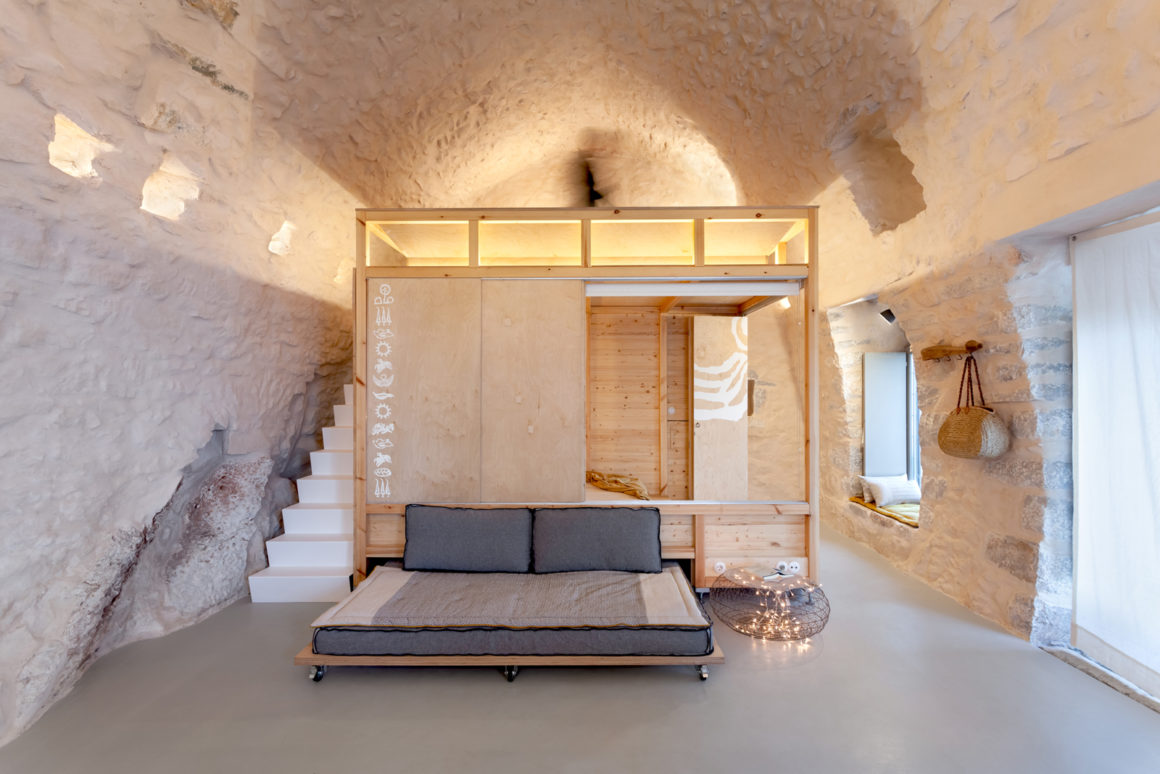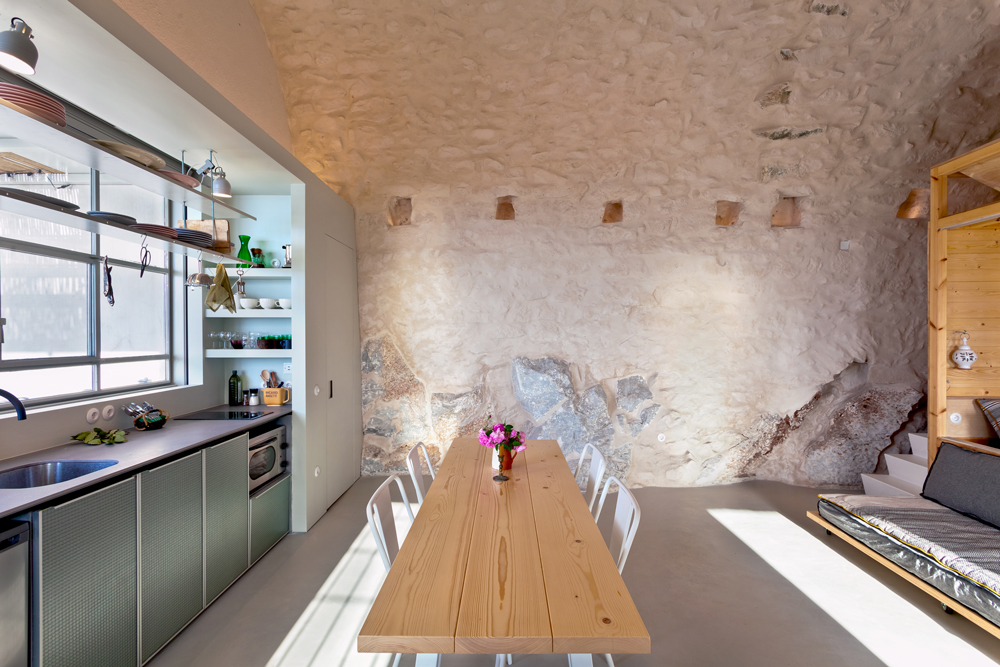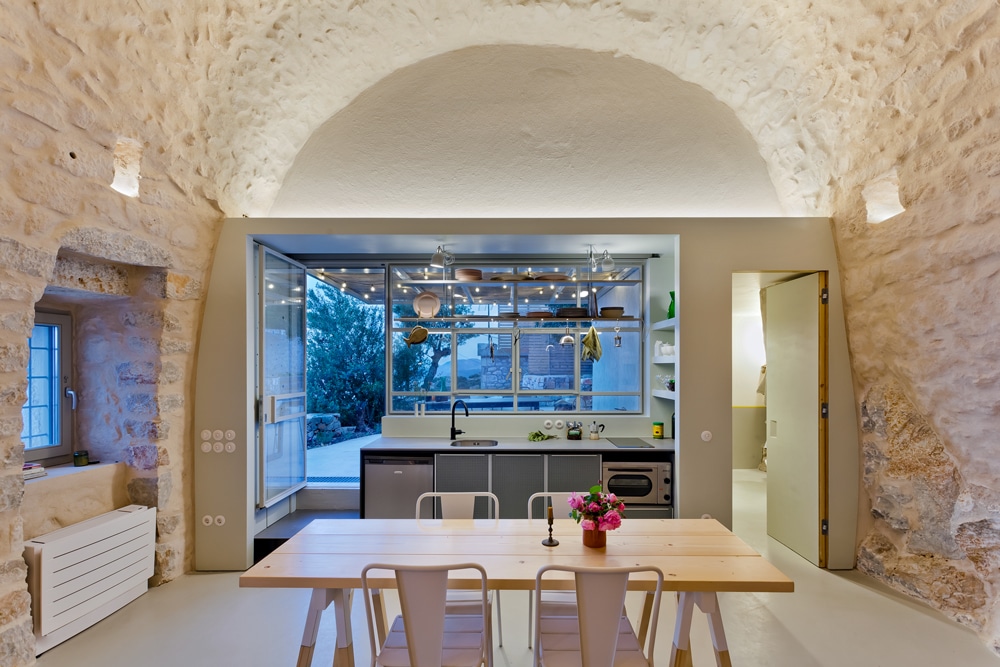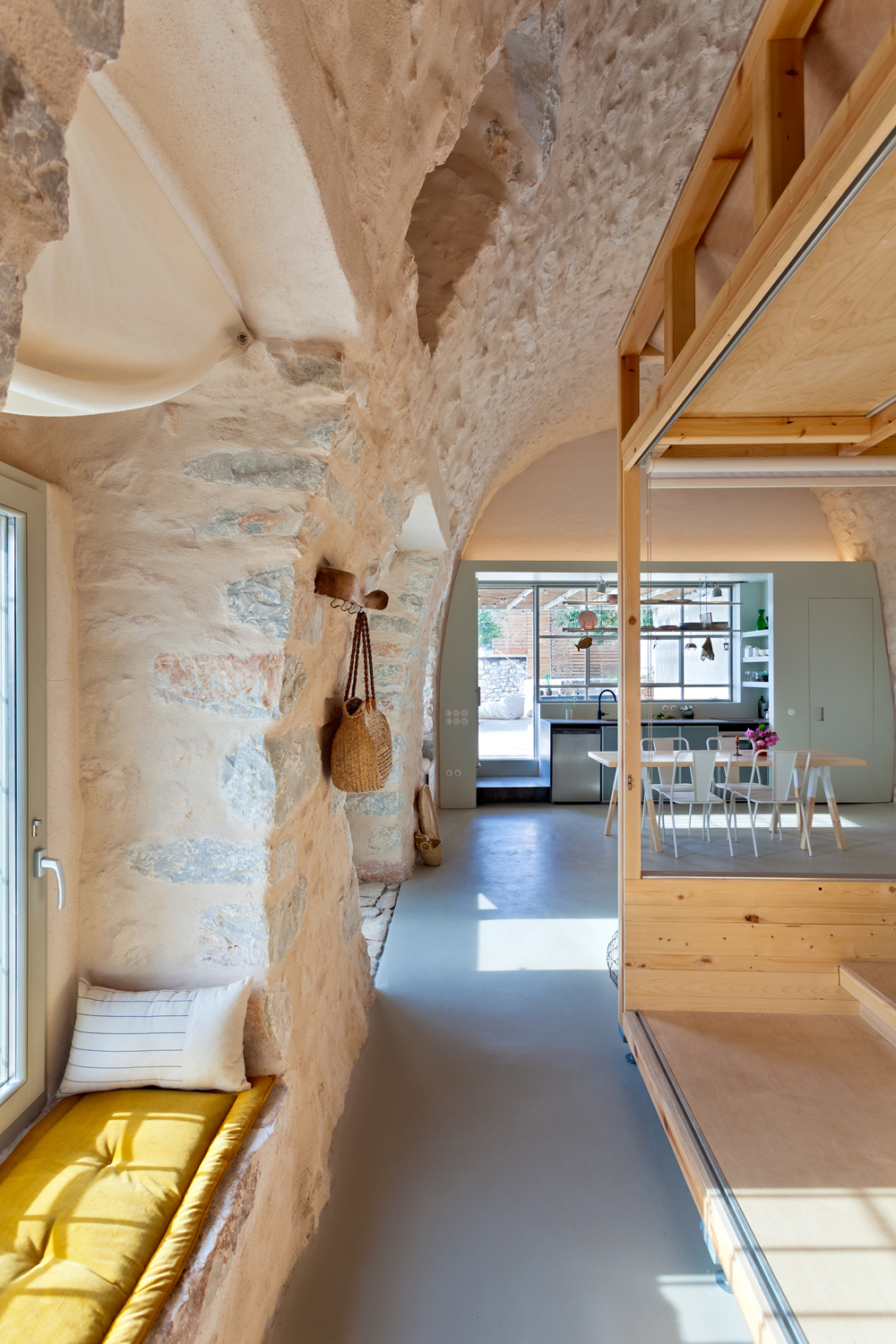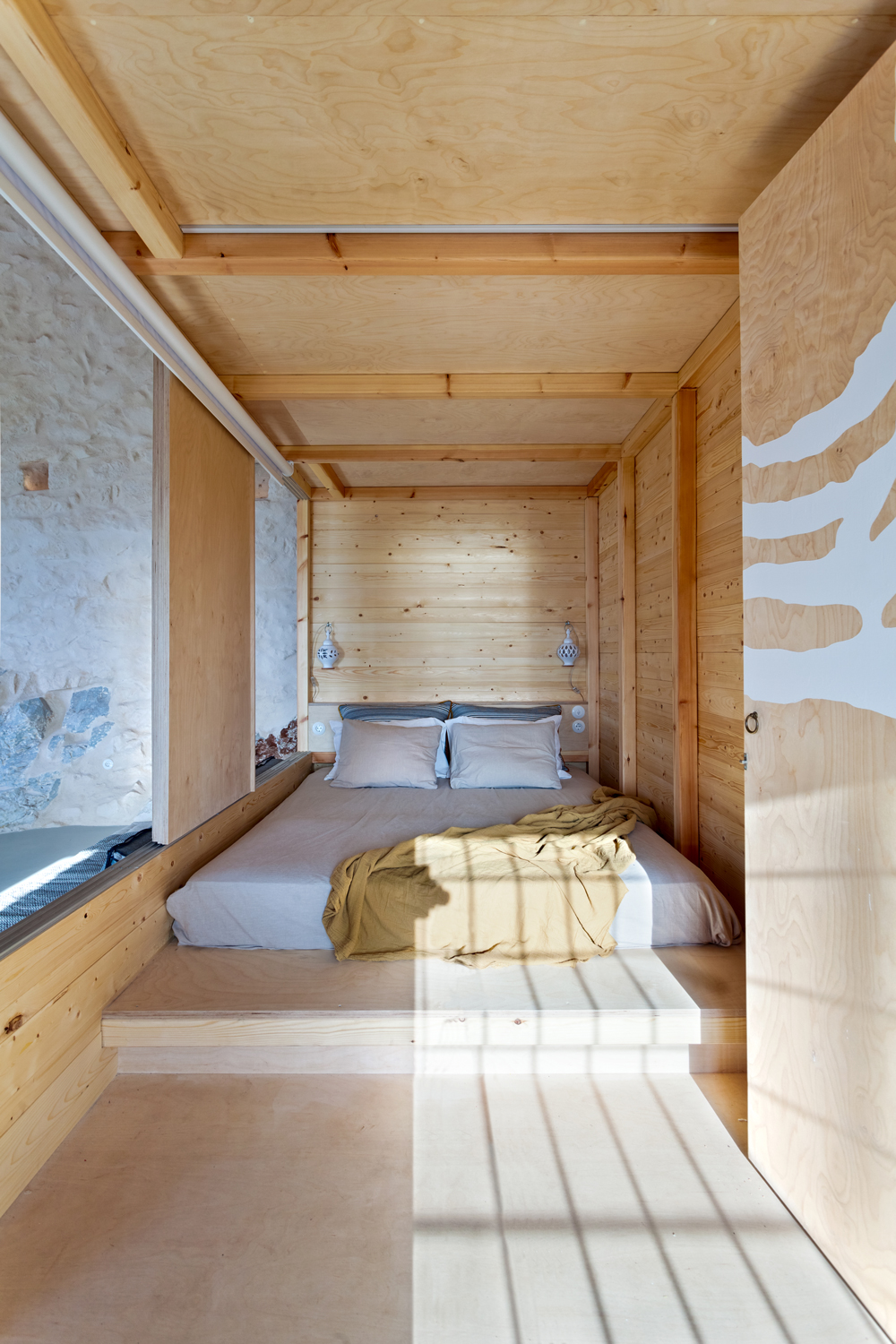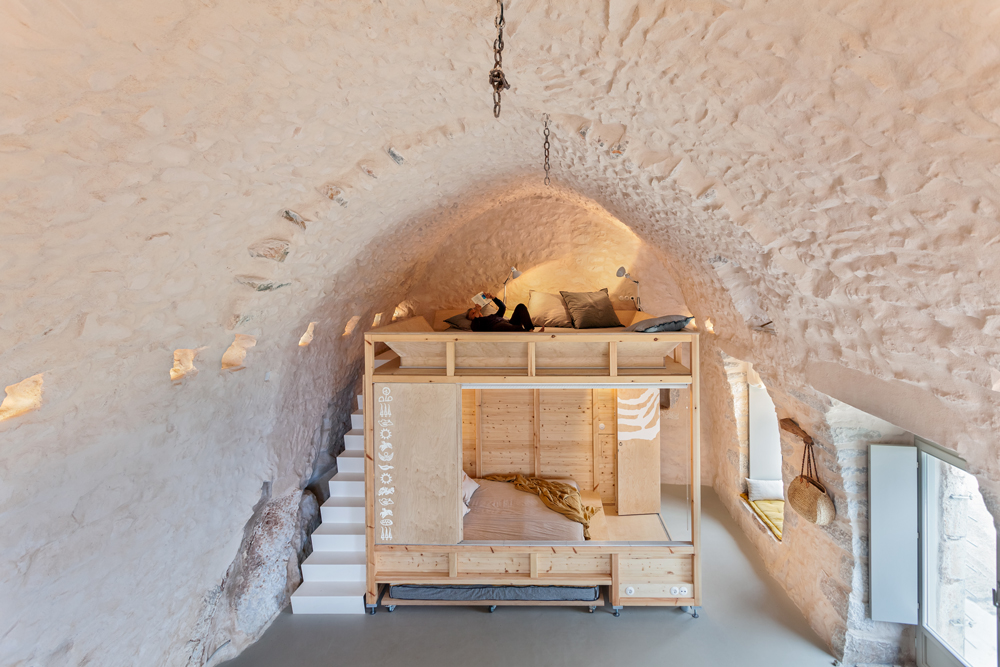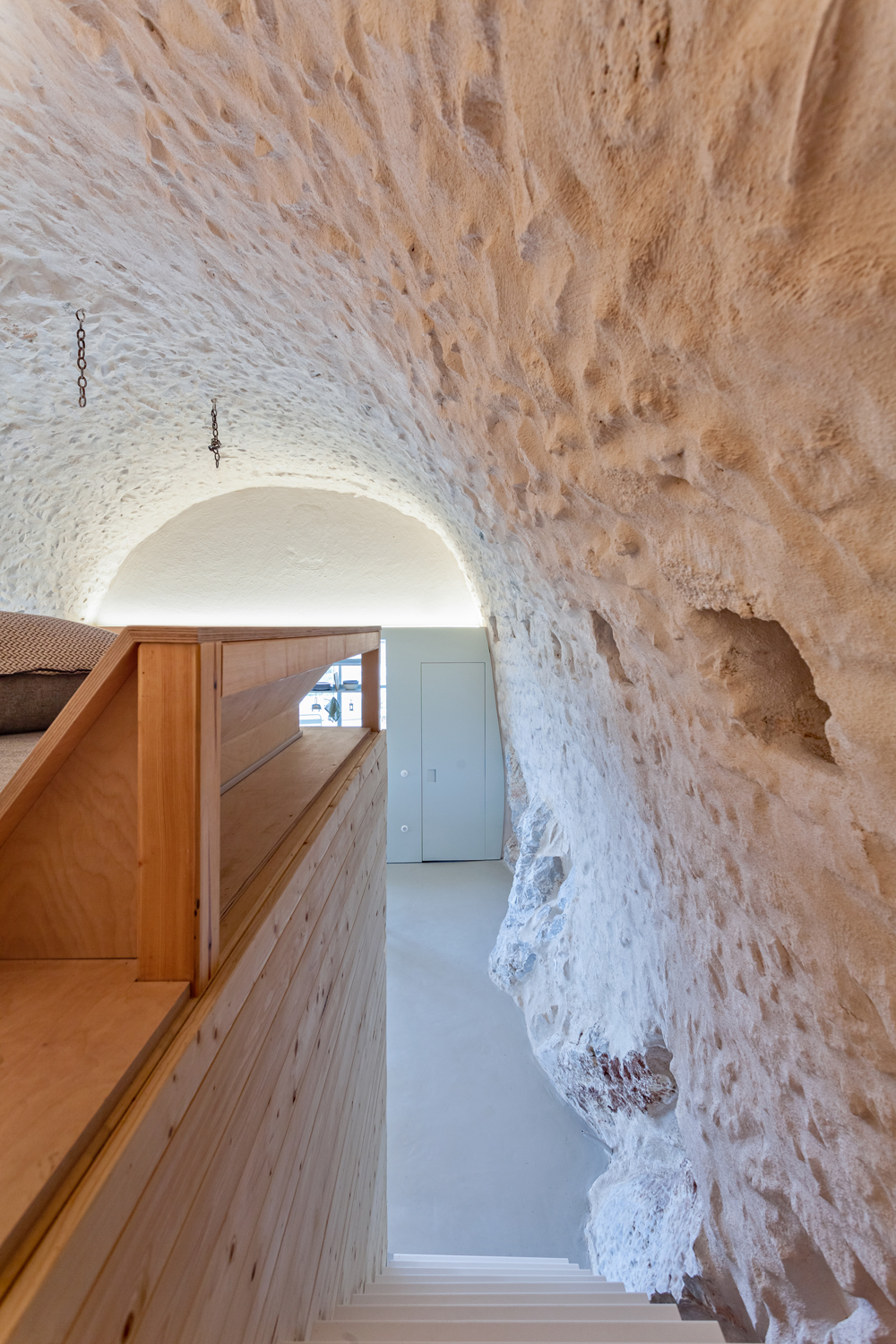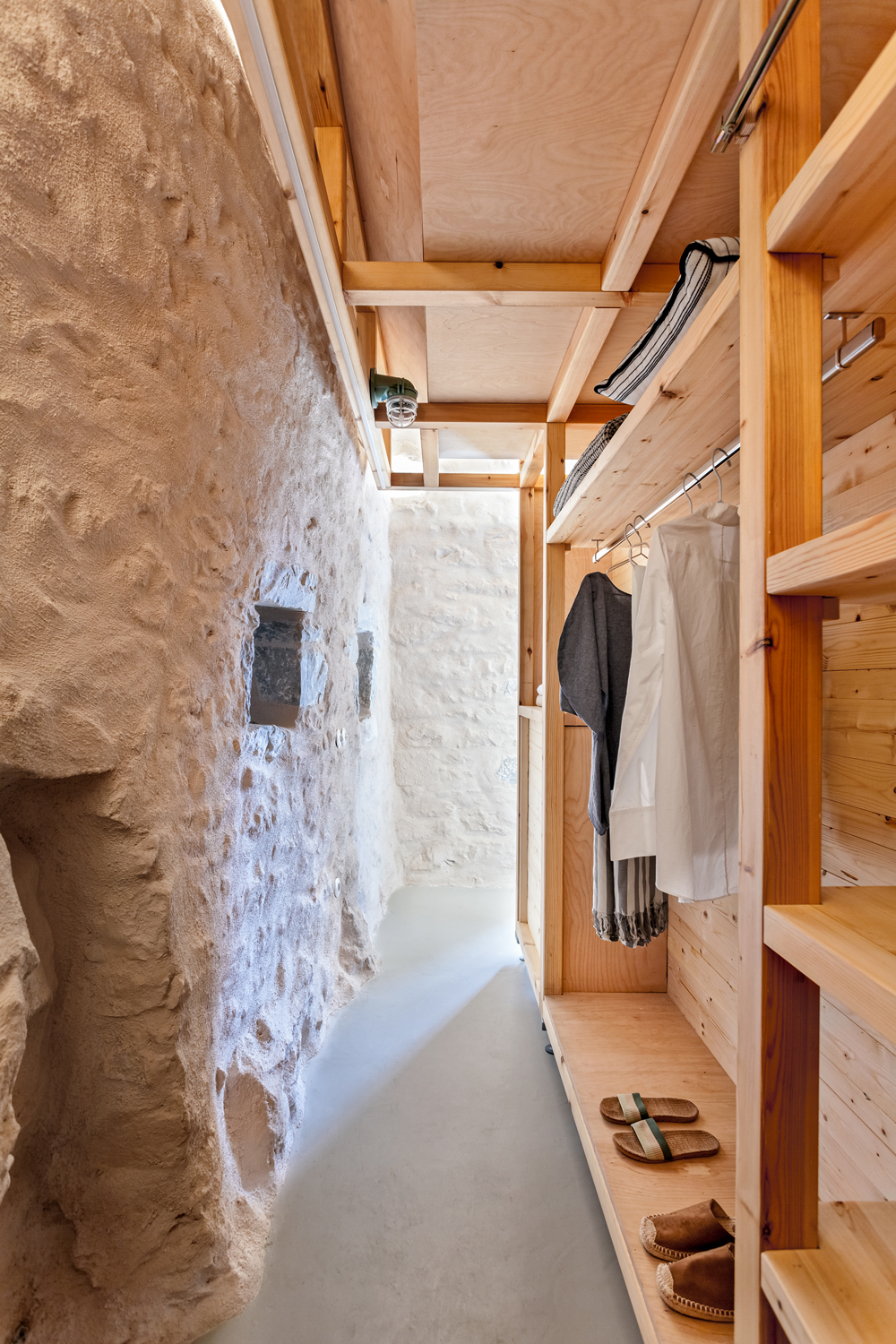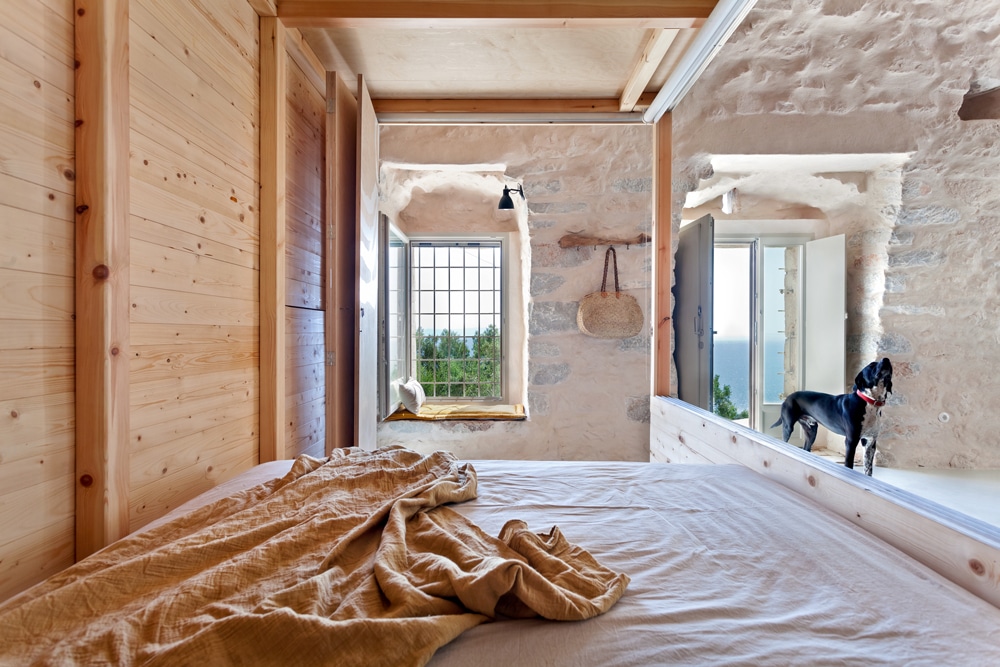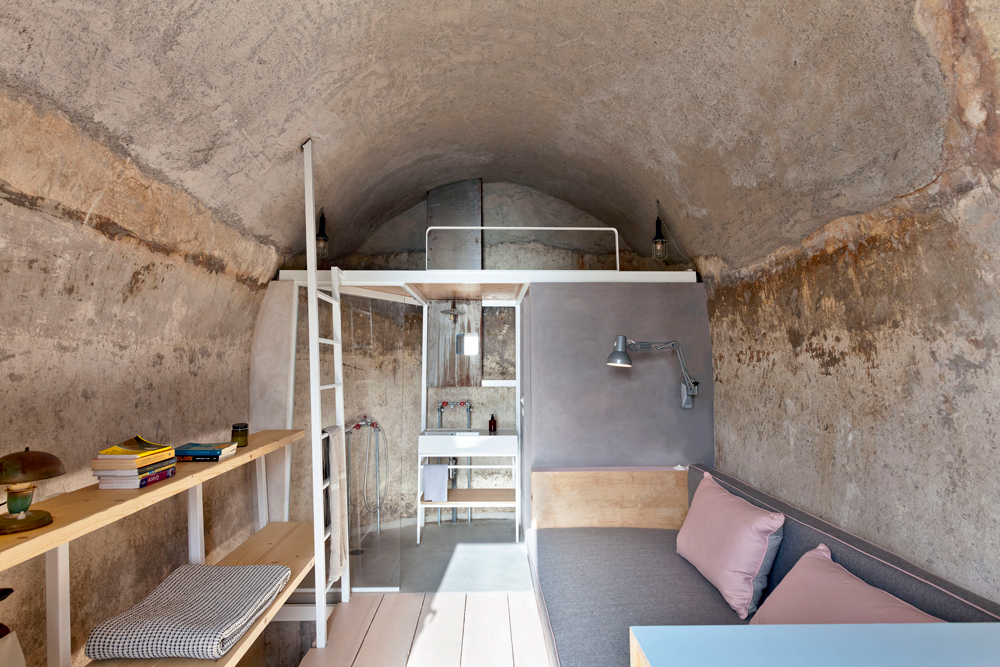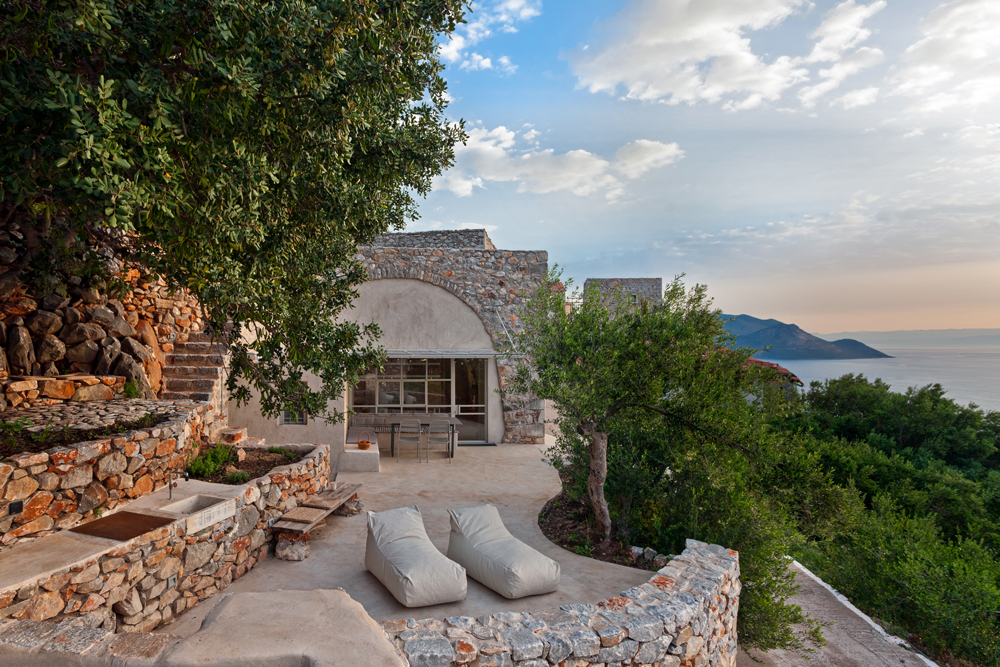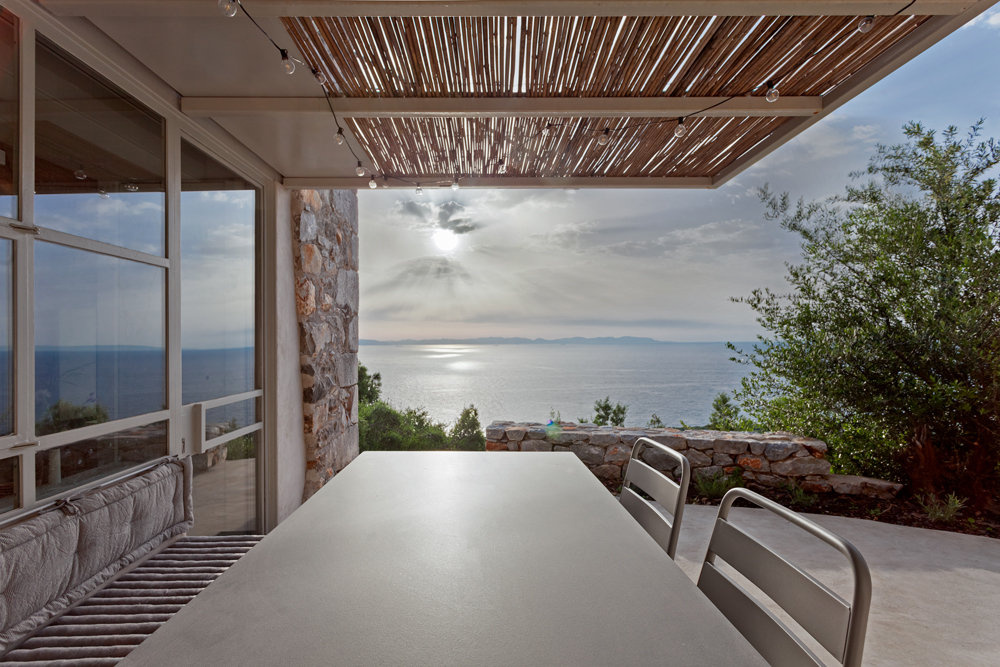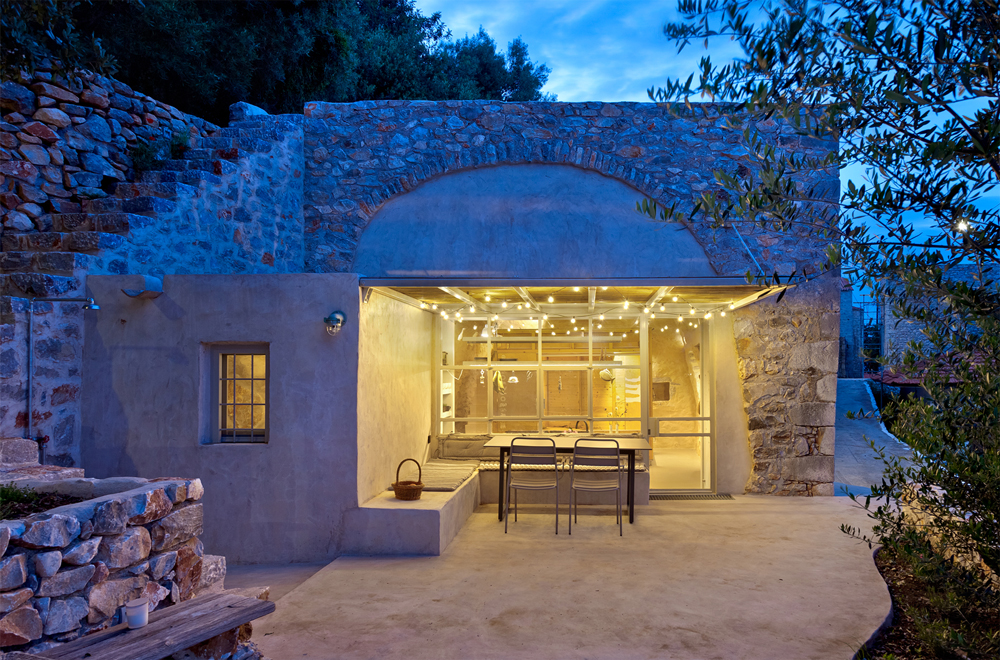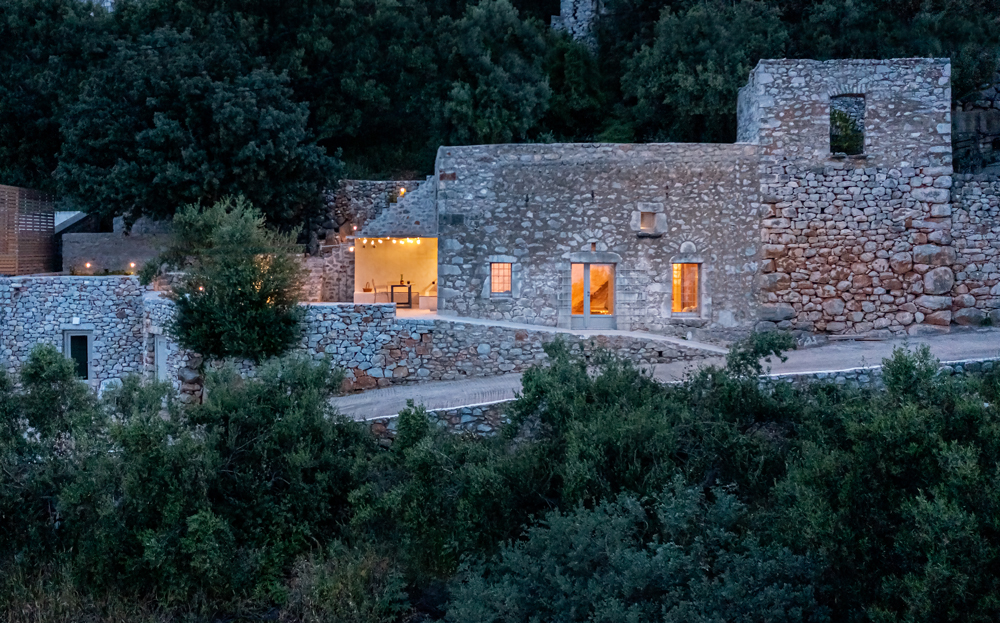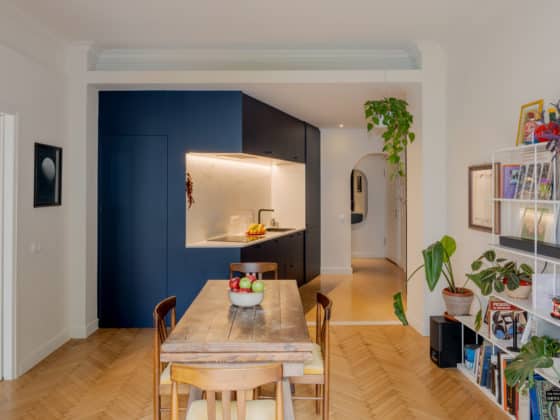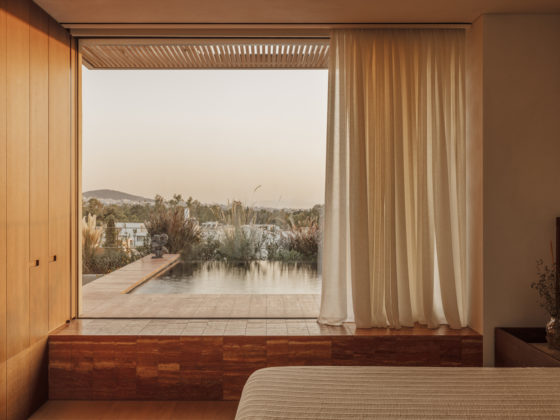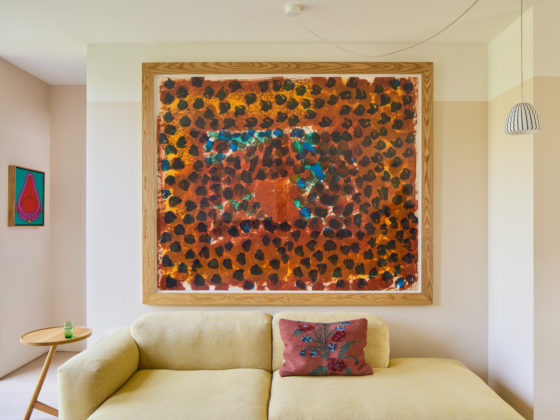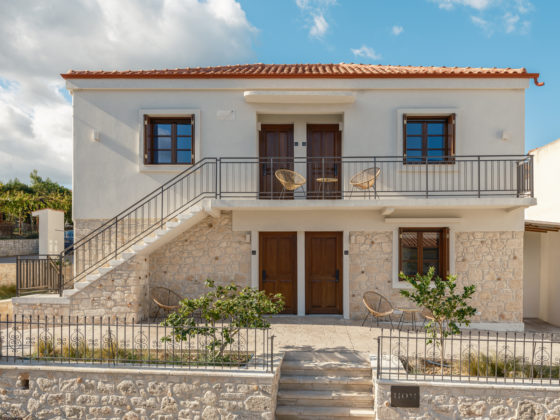Z-level Architecture firm has restored a once-vibrant café-grocery, transforming it into a contemporary dwelling, where time-honored heritage converges with visionary design in the heart of Mani, Laconia. “Thick stone walls, niches, flagstone floors, and an egg-shaped stone cistern built into the earth for rainwater collection, all give us a glimpse of how people in the past rationally managed locally available resources for their construction and working needs. They interacted with the place and time and implemented viable architectural solutions that are still relevant today”, says the architecture team.
In a harmonious union of tradition and innovation, the dwelling along with its outdoor space and cistern, has been given a fresh lease on life. Inside the old store, a flexible living area has taken shape, perfect for individuals or groups. Bathrooms and kitchens now sit on the building’s south side, with rainwater collected in a tank providing water. The remaining open space keeps its original vaulted look, ready for different uses. A new wooden structure stands beside the old building, offering sleeping spaces, places to play and relax, and even a movie screen. The cistern has been ingeniously transformed into its own living area, supported by a metal frame. The original walls remain, and the metal frame can be changed if needed, allowing the cistern to collect water once more. “New elements were constructed with a modular design that can be easily disassembled and relocated, reflecting the desire for flexible, adaptable solutions aiming to reduce waste and promote eco-friendly practices”, says the team. The old façade facing the street has been preserved, complete with its stone walls and special damp filter. Inside, special plasters keep moisture away, allowing the building to breathe. The café’s metal-framed windows facing the courtyard have been fixed up, and local construction teams have worked together to restore the building. The project is part of a bigger effort to save old buildings in eastern Mani.
“Existing traditional architectural stock needs to be rethought, not as fossils or museum ruins, but as a valuable element integrated into modern life, embracing sustainable constructions and communities.”
